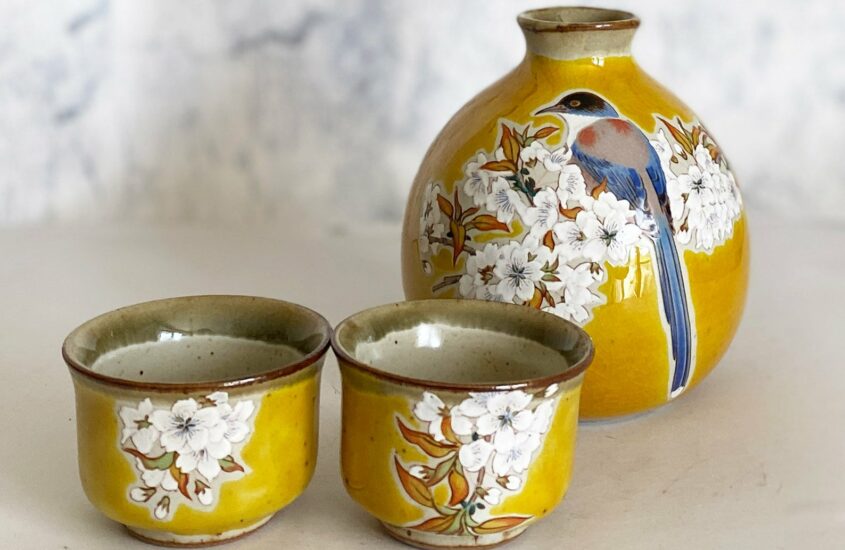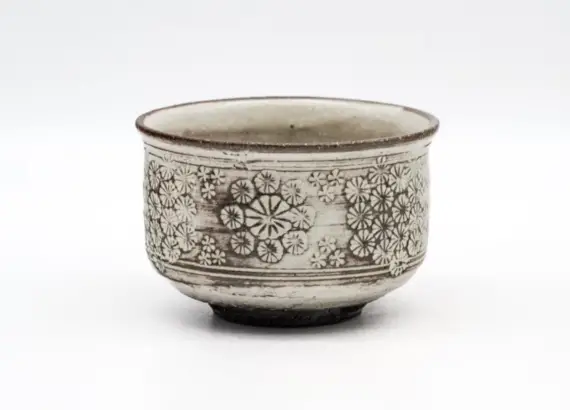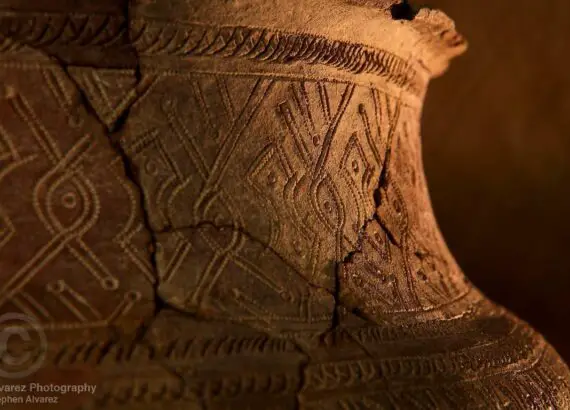What Is Kutani Pottery? Interesting Facts and Methods

If there is one thing the Japanese potters are known for, they can produce breathtaking pieces again and again.
This particular aspect of Japanese pottery is easily distinguished by the bold, eccentric pattern of overglaze. A blend of bold colors is painted atop a thick layer of white or light blue glaze.
From the inception of Kutani pottery, the major pottery products were plates and bowls. Nowadays, the list has extended to include vases and cups to the mix.
Table of Contents
History of Kutani Pottery
The history of Kutani pottery is divided into two periods: the Old Kutani era, and the Renaissance Kutani era.
Around the year 1655AD, Gutou Saijiro built a kiln in the old Kaga province and pioneered the trend of Kutani pottery. For about 50 years, all was well, and the Kutani pottery business flourished until something happened. Although the reasons for it are unclear, Gutou decided to extinguish the kiln, never to make pottery again.
Saddened by the cessation of the production of such masterpieces, many artisans took up the torch. Almost 100 years after the fires went out, artisans decided to rekindle that fire and continue the legacy. The more ancient version of Kutani was dubbed “Ko Kutani”, while the newer version was dubbed “Saiko Kutani”.
Facts About Kutani Pottery
If you ever get in a game of Kutani trivia, here are four of the most interesting facts to make you look cooler.
- Kutani pottery is almost as old as Chennai! It dates back over 300 years.
- Kutani pottery features only five colors besides the white overglaze -red, yellow, cobalt blue, purple, and green. In a bid to preserve the legacy started by the legend, Gutou, these colors have been recognized as traditionally accepted.
- In Kutani, the entire process of overglazing is carried out by hand.
- In a process known as “kinrande”, gold powder is used to decorate the pottery while overglazing. The pottery produced was used by the Imperial family and highly-placed nobles.
Description of Kutani Pottery
Perhaps the most distinguishing feature of the Kutani potteries is the employment of the traditional painting method, “uwaetsuke”. This method entails the application of the “Kutani-gosai” on a white-glazed bisque before the final baking is done.
The Kutani-gosai refers to the five colors traditional colors of Kutani pottery making -red, green, yellow, cobalt blue, and purple.
Some Kutani pottery feature gold decorations in addition to the Kutani-gosai. The technique used here is called “Kinrande“, and it was in use in Japan when Gutou created his kilns.
Where Is Kutani?
This haven of expert potters is located deep in the heart of Japan, in the now province of Kaga. Specifically, Kutani is located in Ishikawa, in the Kaga Province.
Kutani Overglazing Method
When it comes to overglazing, the methods and materials used usually depend on the function of the pottery.
Generally, the potter uses a technique (kotsugaki) to outline the intended design, before using Kutani-gosai. The technique involves the use of a paintbrush to leave a visible outline of a motif or a design.
After using kotsugaki and painting the motifs, the pottery is then refired at approximately 1000°C, to fuse the colors.
The technique of overglazing is referred to as “uwa-etsuke”.
Based on glazing due to function, Kutani pottery is divided into
1. Ceramics made of clay, for example, some domestic pieces like mugs and jugs and bowls.
2. Porcelain, made from porcelain stone.
The difference in overglazing both pottery is the use of gold or silver powder or leaf plates to impress motifs. This process is said to be loosely related to the “kinrande”.
Antique Kutani Wares And Pieces Today
Nowadays, Kutani pieces feature more than the antique bowl or plate. Now, the list has expanded to include animal figurines and figurines of famous characters.
For example, this cute yellow Kutani figurine of a cat.
As modernism has touched every aspect of life -Kutani pottery included, the another method of uwa-etsuke has evolved. To give non-traditional Kutani pottery a traditional feel, the potters use special enamel overglazes. These overglazes give the pottery a semblance of antiquity, while providing depth to the Kutani-gosai.
Tools for Kutani pottery
While some tools can easily be substituted, here are some essential tools used in Kutani pottery:
- The clay. According to some Kutani expert potters, the best clay to be used is gotten from the base of mountains. Once the clay is gotten, it is crushed and filtered of all impurities, before anything.
- Potter’s wheel or a mold
- A paintbrush or comb for kotsugaki
- Towels
- A kiln
- Glazes and overglaze (Kutani-gosai)
- A metal coil
- Metal prongs
Examples of Kutani Pottery
1. These vases from Melton Antiques show that Kutani pottery features wares beside cups and bowls. The designs show how the Kutani potters favored the depictions of nature.
2. This handmade ceramic set of Kutani yaki Sake Cups clearly show the Kutani-gosai. The birds and flowers designs enhances its uniqueness.
3. This handmade cup from Manekineko features the Kutani artistic skill. One side shows two cats looking up with flowers overhead, and the other side is bare, save for black glazing.
4. This simple yet elegant cup from Manekineko shows the depth given to the simple design by the overglaze. The simple tsubaki design on the white glaze gives it a resonating elegance.
5. This Fukurokujo figurine of the Chinese god of wisdom features intricate embellishments. Said to have legendary divine attributes, the attention to detail depicts the reverence of skillful hands.
6. This handmade Kutani Manekineko is said to bring luck to the owner, and each one is handcrafted as customers demand.
7. Literally everything about this Kutani water/ sake set screams elegance and tranquility. The mountain motifs and hues are glaring evidence of the workmanship of skilled hands
Kitani pottery has and will always have a place in the hearts of collectors and pottery lovers. Why not? They are beautiful, traditional, aesthetic, and extremely valuable.




